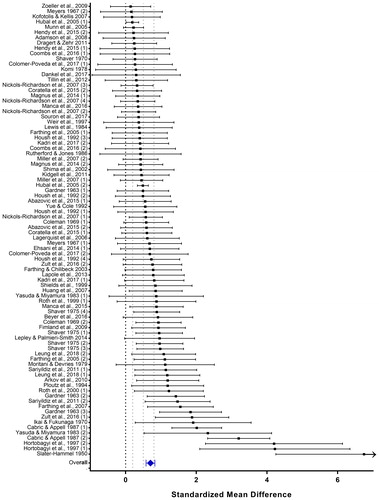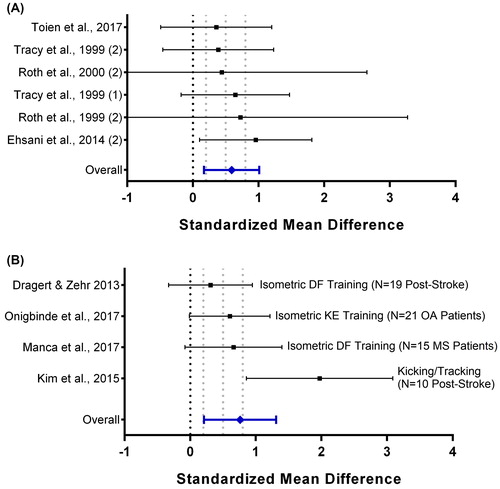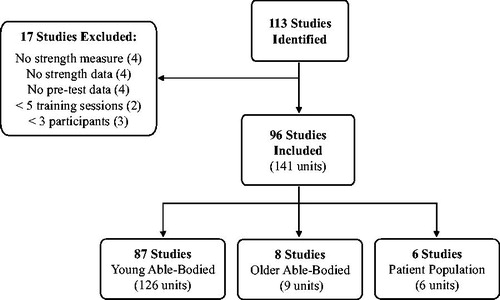Figures & data
Figure 2. Forest plot of standardized mean difference (SMD) for each young unit included in the analysis for the untrained (cross education) limb. Light grey lines indicate cutoff values for small (0.2), moderate (0.5), and large (0.8) effect sizes.

Figure 3. Forest plot of standardized mean difference (SMD) for each older (A) and patient (B) unit included in the analysis for the untrained (cross education) limb. Light grey lines indicate cutoff values for small (0.2), moderate (0.5), and large (0.8) effect sizes. DF: dorsiflexion; KE: knee extension; MS: multiple sclerosis; OA: osteoarthritis.

Table 1. Median and range of training characteristics.
Table 2. Effect size (standardized mean difference), percent gain, and controlled percent gain for the untrained (contralateral) limb.
Table 3. Effect size (standardized mean difference), percent gain, and controlled percent gain for the trained (ipsilateral) limb.
Table 4. The number of units that fall within each category: sex of the unit, the usage of familiarization, the limb involved, and the presence of a control group from the able-bodied participants.

